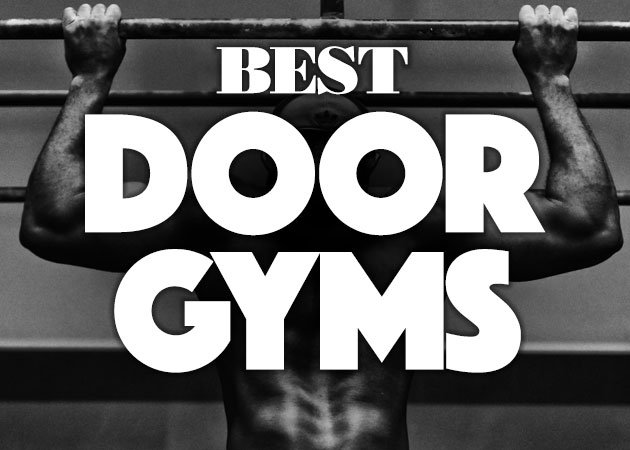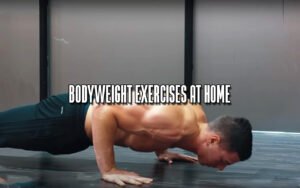
Humans are designed to squat, as evidenced by babies. Athletes do it. In other areas of the world, people do it while conversing or working for hours. However, in modern nations, most of us cease squatting when we become adults, which is a shame since the parallel squat is one of the most efficient and functional movements available. It helps to tone and define your hips, glutes, and calves and tones your hips and ankles while strengthening both legs. However, many mistakes can be made when executing this straightforward activity. Here’s how to perform a proper parallel squat every time.
How to Do a Parallel Squat
Most of us squat to sit several times throughout the day, but that doesn’t imply we’re doing it correctly. When parallel squatting in the gym, follow these steps to use the correct form:
• Stand with your feet positioned between hip and shoulder-width apart, toes pointed ahead (slightly pointed out is OK), and arms extended in front of you.
• Keep your chest up, look forward, and keep your feet flat as you bend at the hips and knees until your thighs are level with the ground. Your knees should track with the center of your feet.
• Pause and return to the starting position.
What is Considered a Parallel Squat?
A parallel squat is when the exerciser lowers their hips to a point where the upper part of their thighs are similar to the floor, keeping their lower back flat and chest up.
The parallel posture is significantly lower than you think, and most people — even seasoned lifters — stop a few inches short of reaching a similar natural stance. One indication: Imagine lowering your hips until the hip crease is slightly lower than your knees. Is it done? That’s parallel. Anything less isn’t possible.
General Mistakes on the Parallel Squat and How to Fix Them
- Too much weight: Before they’ve mastered the bodyweight version of the move, many lifters install a bar on their back. That’s asking for injury. How can you tell whether you’re using too much weight? An Openfit Fitness Advisor, Cody Braun, explains that you should have a parallel line between your shins and spine when descending into the squat. Your lower legs should not pitch forward more than your torso from the side. If you’re unable to maintain the perfect form (make a video or have a buddy inspect your record), take some weight off the bar, remove it entirely, and gradually increase by following the picture-perfect form on each rep.
- Poor condition due to lack of mobility: The parallel squat does not suffer from a lack of strength but rather a shortage of mobility. We don’t have sufficient ankle- and hip mobility to sink to a parallel position because most of us do not sit on the floor but chairs. Many people modify their squat form by rounding their lower back (rather than keeping it slightly arched), raising their heels (instead of holding them flat on the floor), or collapsing their knees inward (rather than tracking in line with the middle of the foot) as they rise from the squat. Here are a few things to try:
- Heels-Elevated Squats: Place a pair of ten-pound weight plates (or a board up to an inch thick) beneath your heels. This easy method frees up the ankles, allowing most individuals to parallel squat without discomfort or limitation. This is an excellent approach for both teaching and learning the bodyweight squat. However, it would be best if you were aggressively working on other ankle-strengthening exercises to enhance your range of motion.
- Suspension Trainer Squat, You can also use a TRX (or equivalent) to perform pull-ups on the ground or in a park. This variation focuses on the extensor muscles of the spine, which help you maintain your torso upright while performing the movement. This also aids individuals in sitting back further into the squat due to the counterweight for weak glutes.
- Still, struggling? Reduce the depth you can achieve with good form and without pain by performing either or both modifications. Over time, you’ll gain the mobility and strength to squat deeply. Is it possible to make parallel cuts? Don’t push yourself if you can’t; go with the depth you have.
Variations on the Parallel Squat
Using your body weight, you may use dumbbells to add resistance to the parallel squat once you’ve mastered it (a good start rep range for novices is 15-20). Start with a dumbbell held vertical in front of your chest (a goblet squat), then a pair of dumbbells at your sides, and, if you wish, barbell back or front squats. Add weight gradually, and don’t forget to preserve the depth you gained while performing parallel bodyweight squats.
Are Parallel Squats Effective?
Squats are an excellent test for assessing how the body moves since they relate to everyday movement and demand that the entire body is used. “It’s also a fantastic full-body workout.”
Some lifters feel that heavy barbell squats are the most fantastic leg builder; for others, they cause mostly joint and back discomfort. Keep the bodyweight variation in your routine — as a warm-up, thigh-building exercise, or both — but assess how you respond to barbell exercises. If you sit through a movie feeling guilty about your posture for days, have a trainer, or physical therapist check your form. No pain or problems? Full speed ahead.
What Muscles Do Parallel Squats Work?
Parallel squats are an excellent overall lower-body exercise that works your front thighs (quadriceps) and glutes (butt muscles), which extend your legs at the knee joint.
The hamstrings (back-of-thigh muscles), which aid in hip extension, and the core muscles of your lower back and abdomen, which provide stability during the movement, are just a few supporting players.









Blog Comments
Best Aerobic Exercises to do at Home - Home Workout Reviews
May 21, 2022 at 6:27 am
[…] Bodyweight squats […]